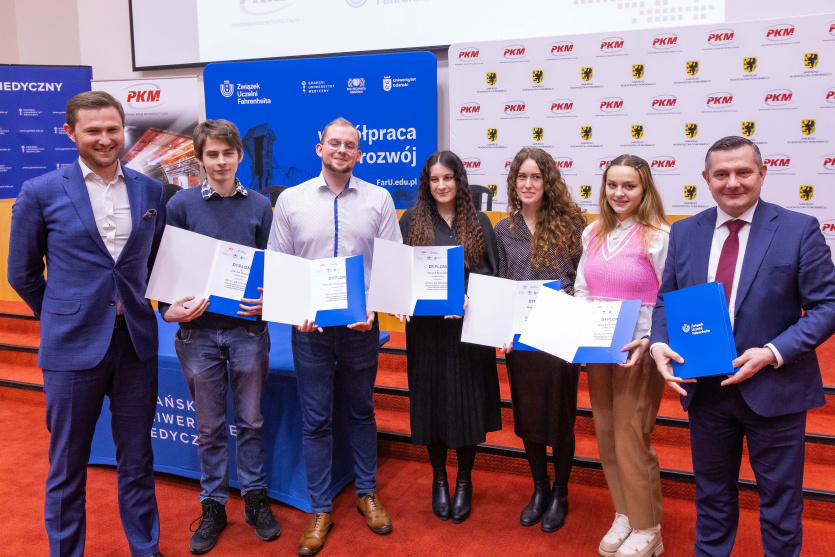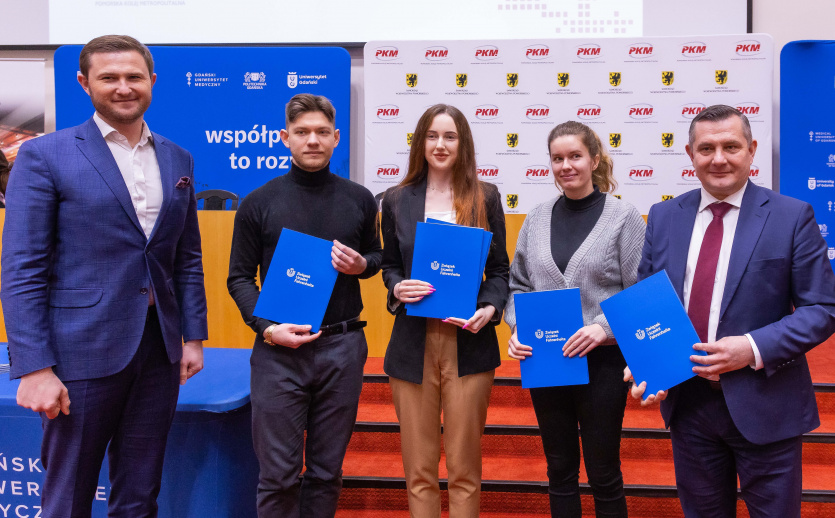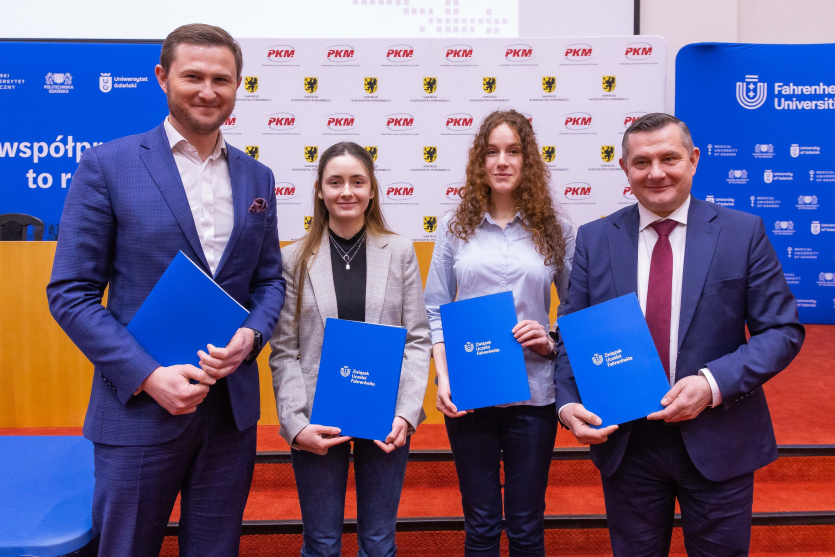'Shift to culture', 'Green carpet' and 'Yellow Ribbon' are the winning projects of the second stage of the 'Railway to the South' competition, organised jointly by the Pomeranian Metropolitan Railway (PKM) and Fahrenheit Universities (FarU). Students from MUG, PG and UG developed concepts for the functioning of future stops of the PKM South line.
The participants' task was to detail the solutions presented in the eight projects selected in the first stage. The works had to consider not only functional-spatial aspects but also social, environmental or economic ones, including technological solutions unrelated to transport.
Another requirement was an interdisciplinary composition: at least one student from each of the universities that make up FarU - the Medical University of Gdańsk, the Technical University of Gdańsk and the University of Gdańsk.
- 'Universities are associated with didactics and science, but in Poland, they are also increasingly associated with a third mission: to influence the region's socio-economic development. We are glad we can take part in undertakings such as the PKM South and fulfil this mission,' - says the Vice-Rector for Science at the Medical University of Gdańsk, prof. dr hab. Michał Markuszewski.
The 'Railway to the South' competition was also aimed at strengthening the attractiveness of passenger rail for users. For the winning teams, PKM SA funded monetary prizes worth a total of PLN 20,000.
- 'The results of the second stage of the "Railway to the South" competition positively surprised us. Sophisticated concepts, innovative solutions, and a fresh perspective from young people meant that the competition committee had a challenging task. Diverse visions, each emphasising completely different issues and simultaneously combining numerous pro-environmental and pro-passenger solutions, are what we need in Pomerania and the country as a whole. We can only discuss modern public transport in the future if we include bold visions and modern solutions in a project such as PKM South,' - says PKM SA President Grzegorz Mocarski.
The Deputy Mayor for Sustainable Development and Investment, Piotr Grzelak, gave his support for the jointly undertaken activities: 'If we think of projects that we identify as groundbreaking shortly, such strategic undertakings include the creation of the Fahrenheit Universities Association and, in terms of infrastructure, the Pomeranian Metropolitan Railway. We see enormous potential and development value for Gdańsk and the Metropolitan Area.'

The winning design team: Agata Karczewska (MUG), Daria Szczygielska (MUG), Patrycja Stawska (PG), Małgorzata Maina (PG), Patryk Pliszczyński (UG), Jakub Durawa (UG).
What should rail transport look like in the future? According to the authors of the best project, entitled 'Shift to culture', modes of transport should be integrated and use tools from the Big Data sector, making them more accessible and attractive. Still, they should also involve users and care for the environment. They have solution proposals ready for this, such as creating a piezoelectric path that can generate energy as you move along it and return it to the station's energy circulation system. An app would generate traffic on the path, allowing people to buy tickets or check timetables and encourage users to count their steps, collect loyalty points and then exchange them for discount fares.
- 'We wanted to draw attention to the inverted mobility pyramid to give priority to designing space to meet the needs of people on foot,' - says Małgorzata Maina, a Gdańsk University of Technology student co-author of the 'Shift to Culture' project. - 'At the same time, we see our project as a broader look at interchanges. Our vision meets the basic needs of users but also goes beyond them, integrating, activating, or simply offering an opportunity to spend time pleasantly.'
The concept is that a bus stop can be self-sufficient in terms of energy and, in addition, be a cultural centre with its own reading room, cinema, bookshop or space reserved for local artists.

Composition of the team that took second place: Sandra Julke (MUG), Aleksandra Wojciechowska (MUG), Dominika Wodeńko (PG), Sylwester Wilczak (PG), Martyna Sydorów (UG).
Second place was the 'Green Carpet' project, which also pays a lot of attention to extracting energy from the environment. One proposal is the use of a device with a turbine, with which it is possible to remove electricity from the strong gusts of wind regularly generated by speeding trains. Other environmental solutions included shared greenhouses, beehives built from recycled materials and bricks made from algae as an alternative to producing concrete, a carbon-intensive process. The authors also highlighted the need to reduce noise from rail traffic.

The team consists of: Wiktoria Kucharek (MUG), Liudmila Matsisovich (PG), Marta Kloch (PG), Lion Ivanyushin (UG) and Julia Balewicz (UG).
Another award-winning project was the 'Yellow Ribbon'. The concept involves the construction of a facility based on several footbridges, which is expected to translate into barrier-free travel for the elderly, those with pushchairs and the disabled. Tactile paths, warning strips and tactile maps would provide comfort for visually impaired or blind people. The biological treatment of wastewater through plants, retention basins or installing a kinetic wall as a substrate to generate electricity are examples of solutions to be implemented to benefit the environment.
The gala event for the announcement of the results, combined with the opening of the exhibition of competition works, took place on February 8 at the Medical University of Gdańsk. The event was attended by: Vice-Rector for Student Affairs of the Gdańsk University of Technology dr Barbara Wikieł, prof. PG, Dean of the Faculty of Architecture PG prof. dr hab. inż. arch. Lucyna Nyka, members of the Competition Committee, university coordinators involved in the competition at each of the three FarU universities, representatives of the Gdańsk Development Office, the Pomeranian Metropolitan Railway and numerous representatives of the academic community.
All participants in the competition were invited to present their work results at the event briefly.
